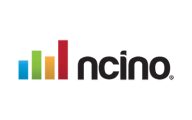When I first chat to B2B tech leaders, I often find they take an ad hoc approach to their marketing; many focus on attracting leads and driving sales within a set timeframe, like a quarter. It’s common for the smaller businesses within this group to not have a dedicated marketing role or function inhouse, so they entrust these activities to external agencies. Often this non-strategic approach has failed to meet expectations, exhausting both internal resources and budgets, leaving them with ‘cold feet’ about the value of marketing and what it can do for their businesses.
This article explores why it’s an opportune time for B2B tech sellers to explore a new strategic marketing approach centred around ‘teaching’, and how to do it so it resonates with prospective buyers, delivers incremental commercial value, and accelerates competitive advantage.
Why shift from selling to teaching
Since 2008, Gartner’s Challenger team (formally CEB) has led a large, intensive, and in-depth research project to understand and gain insights into the key influencing factors and buying behaviour trends of B2B customers.1
Their decade of analysis report2 released late 2020, shares that for B2B buyers and sellers globally ‘2020 represents the most disruptive period any of us have ever experienced’. Covid has contributed to a new reality that has made selling harder to get deals over the line for the following reasons:
- More people are involved in purchase decisions than ever before. Traditionally B2B buying committees were made up of 6-10 people with a mix of supporters, influencers, and blockers, but with Covid these numbers are substantially larger – perhaps even double3
- Research findings published in the Challenger Customer book4 found that as more people get involved in buying decisions, the more fragmented and dysfunctional groups become, and the likelihood of purchase drops dramatically
- With more people making decisions, in a highly volatile market, there’s new roles to interact with and win over. These roles may be C-Suite level and procurement2, and sales teams typically have less experience understanding and catering for the perspectives and needs of these roles in the buying process
- Before Covid it was common for 38% of sales conversations to end in ‘no deal’4. This is likely to be substantially greater now as organisations put a freeze on any spending deemed non-essential and/or redirect budget towards other more ‘urgent’ business priorities with little warning2
- Finally, the competitive battleground is now virtual, this requires both a different approach and different set of skills than what might have been previously relied on to retain existing business and drive new growth5
Teach customers about their problems, in ways that lead to your solutions
For technology vendors and solution sellers, the current landscape has created the perfect storm of high demand from leaders across many industries (prospective customers) who want, and quick frankly need to, transition to tech-enabled strategies to protect their current businesses as well as help them expand where they play and how they win.6 They know that the technology they choose now will play a vital role in fuelling the strategic and disruptive growth they are looking for—but the ‘what’, and the ‘how’ of the technology they need, are still likely to be up for grabs.
It really is the perfect time for B2B tech experts to step in and provide a guiding light for business leaders and industries (prospective customers) in need. Technology experts can help their audience to identify and understand their problems and opportunities and lead them to solutions that can better support them today and give them the confidence and the capabilities they need to face a less predictable future. Getting this right is a win/win as it delivers a major competitive advantage for both buyers and sellers.
Authentically teaching audiences something new about the problem their business is facing, rather than selling, is backed by conclusive Customer Challenger research. It has proven to be the most significant statistical driver in winning deals (+44.6%)4 – and remains so today. But on the flip side very few sellers are currently doing this well. Challenger’s decade wrap-up report reveals that the ability of sellers to demonstrate unique insight about their buyers’ businesses had fallen to 52% below expectations.2 In addition to this, helping buyers (sometimes lone advocates) to educate and win support amongst others (often fierce blockers) within their organisations was equally poor, down 49% in the eyes of buyers.2
The shift to ‘teaching’, might sound easy, but in my experience, despite good intentions large vendors find it hard due to their size and complexity of their organisations as they have so many products, solutions, decision makers and channels in the mix. As a result, at best, they can only do it across some areas of the business and only for some buyer touchpoints.
In contrast I have seen some phenomenal results amongst many SMB B2B tech providers that have successfully seized the opportunity with genuine teaching messages and experiences that are consistent across all buyer touchpoints, that lead them buyers back to the solutions they are selling—at the most appropriate time in the process.
The benefits of teaching, goes beyond marketing
Marketing and sales are inherently linked. Get the messages right and it will support leaders and sellers within your organisation in the following ways:
- Helps craft a customer-centric value proposition that can form the foundations of your marketing communications and your sales pitch—enabling it to be consistent across all buyer touchpoints and all team members;
- Sparks broader market interest by teaching/educating industry decision makers, influencers and traditional blockers about their own needs and opportunities before jumping to a solution—enabling you to be viewed as a thought-leader and carving out the opportunity to build relationships with prospective buyers much earlier in their purchase decision journey, when the door is often firmly shut to salespeople;
- Over time, with the help of relevant and inspiring content and experiences, a strategic teaching approach helps to build up the funnel of engaged considerers exploring their problems with you, who can be gently guided towards your solutions and prime them for more meaningful interactions with your business at an appropriate time;
- This same content can also be used to enhance experiences and grow relationships with your existing customers and to add value to existing sales conversations.
The opportunity is to use your marketing to engage and build trust early with prospective buyers at the time when they are still defining their problems, and thereby elevate you out of the commodity rat race, in which you would be more likely to go head-to-head with competitors on price and be disadvantaged if you are up against larger competitors.
When marketing is approached in a structured and strategic way, with a commitment to tracking and reporting results, understanding what prospective buyers are looking for and how they behave, is no longer guesswork. With this approach you can direct your future marketing investments towards the channels and content that are tried and proven to connect with quality buyers, who are more attuned to your offering, who are easier to convert, who generate the most commercial value, and who value the depth of the relationship you have built with them from the start.
Four transformative steps
The first step is to make the conscious shift from a stop-start campaign mentality to a continuous strategic program approach that provides the foundation for all your marketing and sits inside your organisation rather than being part of an external agency.
Steps to success are:
- Run a discovery workshop to understand:
- Business goals and priorities
- Your target customers including roles, segments, industries
- Macro trends / challenges facing your target customers
- All supporters, influencers, and blockers within the buying committee
- The shared need of your buying committee– so you can teach them as a group, not as individuals; the last thing you want to do is create factions that will reduce their ability to reach a consensus and therefore to buy the products and services that you sell
- The unique selling propositions (USPs) of your business and your solutions that can help support these audience needs and challenges
- Internal and external channels available to you (own database, partnerships, social through to industry partnerships, associations and paid media)
- Any existing content available to use
- Any past, current, or future marketing plans that still have legs; and
- Inhouse capabilities
- Create a marketing strategy that synthesises all the findings from the workshop into a comprehensive marketing plan that starts with the articulation of context, audience needs and your value proposition and leads into an actionable go-to-market plan by quarter that details the customer experience including channels and content across all stages of the buying journey. It’s important to note this strategy only needs to be done once, from there it’s all about quarter-on-quarter reporting and recommendations to continually build on and optimise buyer experiences and business outcomes. A sound approach would be to justify the marketing strategy and investment with a financial forecast or value attribution model that makes hypotheses around your return on investment from the activity. At the end of the day, marketing should be a value-creator rather than a cost, otherwise it’s not worth doing.
- Identify the best channels and content for the launch phase. The key is to have a customer-centric website experience with clear benefit-driven messaging and relevant and engaging content that really speaks to your audiences’ most pressing challenges and burning needs
- Prepare your market roll-out with solid reporting in place (this could be a combination of using Google Analytics (GA), a customer relationship management platform (CRM) and selected specific channel reports i.e., social or media) always ensuring the latest privacy conditions for relevant jurisdictions are adhered to.
Directly attributable results
B2B tech clients who have committed to this approach have achieved some impressive results over the years, here are a few highlights:
- Email open rates of up 81.3% and click through rates of up to 66.2%
- From investment of $85k, pipeline revenue of $7.8m and a return on marketing investment of 142:1
- Paid “Linked In” click through rates up to 1.5%
- Marketing qualified leads (MQLs) 40% above targets
- Actual revenue 47% above targets
The results above have all been achieved from crafting strategic marketing programs that authentically led with ‘teaching’ in ways that led back to the solutions and services that these providers were selling.
If you’d like to discuss how strategic marketing could be applied to your business get in touch with Mel Johnstone at melj@rocketscience.com.au
————————————————————————————————————————-
Author: Mel Johnstone is the Strategy Director at Rocket Science, a strategic marketing consultancy that provides a fresh alternative to traditional advertising agencies and large consultancies. Over the last six years she has been 100% focused on B2B tech clients and has led strategies for large vendors like Microsoft, HP, Fujitsu and Dicker Data and their partner networks, as well as for SMBs within their partner programs and for smaller independent tech businesses. She is passionate about business strategy, marketing, customer experience (CX) and results and bringing them all together. She is currently teaching the Data Driven Marketing Essentials course at ADMA.
2 How B2B buyers choose their suppliers. A decade of analysis
3 Engage B2B Buyers in an Uncertain Environment
4 The Challenger Customer. Selling to the hidden influencer who can multiple your results

















